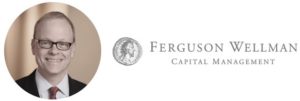
by Brad Houle, CFA, Executive Vice President
April 14th — For the shortened holiday week, equity markets were down by almost 1 percent as investors followed events in Russia and North Korea. Interest rates were lower with the 10-year Treasury declining in yield from 2.36 to 2.22 percent.
Each quarter we select a theme for our investment strategy communication and this spring it is, “Economics Over Politics.” It highlights that, despite some recent market softness due to geopolitical concerns, the financial markets are more focused on economic data than current political nuances and navigation occurring in Washington, D.C.
Economic data continues to be strong with job openings and “job quits” at a 20-year high. The “quits” data is a great indicator of confidence as most workers will not leave their place of employment unless their confidence is securing another job is high.
As stated in previous communication, confidence is really the crucial factor that has been driving markets and the economy. The chart below includes survey results aggregated by the University of Michigan for nearly 40 years. Consumer confidence strongly influences household purchasing decisions and according to the Commerce Department, household spending increased at a 3.5 percent clip in the last quarter of 2016. Consumer spending makes up two-thirds of U.S. GDP, so confidence-driven spending inherently creates a tailwind for the economy. The most recent report on this topic shows the measure of overall confidence at 115, which is close to the all-time high we saw during the internet boom in the late 1990s.

Source: University of Michigan
Not everyone interprets the findings from consumer confidence data in the same manner. According to University of Michigan, Republicans was at 120.1 as of the end of February whereas confidence among Democrats was at 55.5. This gap in sentiment between political parties is the widest on record since 1945. The partisan divide doesn’t just reside inside the Beltway; it is evident that this glass-half-empty-half-full dynamic is prevalent across the U.S.
Near-record levels have also been attained for confidence from CEOs and small business, which is driving capital investment and hiring decisions. Confidence for individuals heavily influenced by the labor market is showing no signs of weakness at this time. That said, more flare-ups in hostilities with North Korea, Russia or Syria could quickly dampen consumer enthusiasm.
Our Takeaways from the Week
- The financial markets are focused on the strength of the economy and not the dysfunction in Washington, D.C.
- Consumer confidence drives increased consumption and in turn, consumer demand drives the U.S. economy
Disclaimer: Articles featured on Oregon Report are the creation, responsibility and opinion of the authoring individual or organization which is featured at the top of every article.


